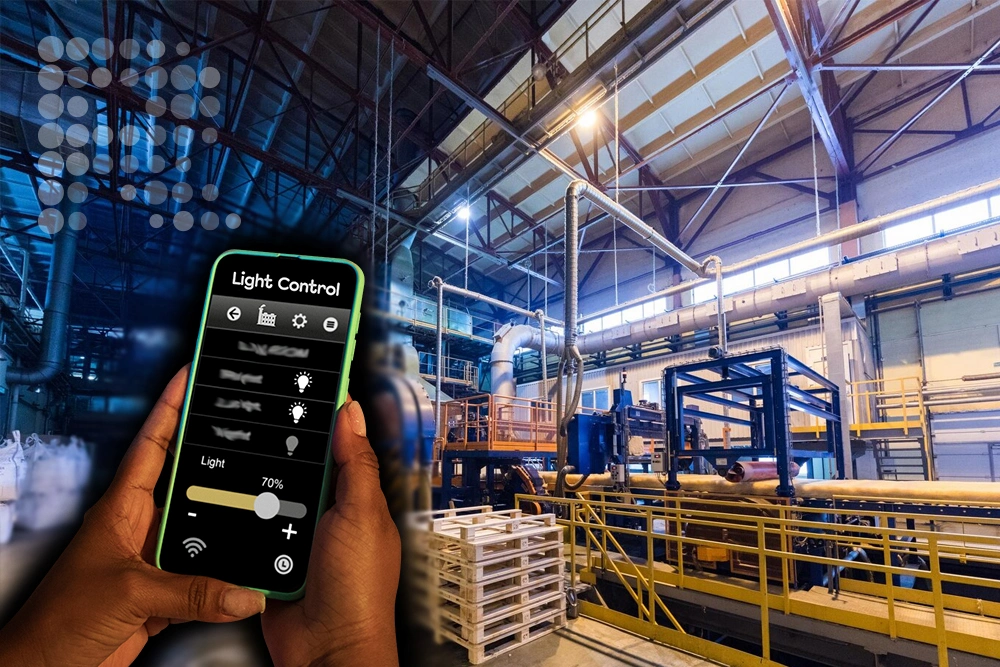
Here’s a refined draft of the Alrouf IoT Educational Book tailored for public release. It removes mentions of competitors or clients while highlighting Alrouf’s expertise, innovations, and applications.
Alrouf IoT Lighting Solutions: Enhancing the Future of Smart Lighting
Introduction
Lighting is no longer just about illumination—it’s about creating smarter, more sustainable environments. At Alrouf, we integrate cutting-edge IoT technology with advanced lighting solutions to redefine how spaces are illuminated. From smart cities to industrial facilities, our systems provide energy-efficient, adaptive, and data-driven lighting solutions tailored for the future.
Chapter 1: The Evolution of Smart Lighting
Lighting Meets IoT
• The integration of IoT with lighting enables smarter control, improved energy efficiency, and valuable data insights.
• Alrouf leverages IoT technology to empower centralized management, adaptive lighting, and energy savings in various sectors.
Why Choose IoT for Lighting?
• Energy Efficiency: Reduce consumption with adaptive lighting.
• Data-Driven Decisions: Monitor energy usage and optimize maintenance schedules.
• Enhanced Control: Use centralized dashboards to control individual or grouped lights.
Chapter 2: Components of Alrouf IoT Lighting Solutions
IoT Gateways
• Act as the central hub for communication between the CMS (Central Management System) and smart devices.
• Support multiple communication protocols, including:
• Zigbee: Reliable and low-latency mesh networking.
• LoRaWAN: Long-range and low-power communication.
• NB-IoT: Cellular-based solution for wide coverage.
• Wi-SUN: Scalable and secure for large deployments.
Smart Controllers
• Facilitate dimming, scheduling, and fault detection.
• Compatible with LED systems, enabling seamless retrofits and new installations.
• Designed for indoor and outdoor use, with weather-resistant options available.
Advanced Sensors
• Motion detection and daylight harvesting for automated control.
• Environmental sensors for humidity, temperature, and air quality monitoring.
Chapter 3: Applications and Use Cases
Smart Cities
• Alrouf’s systems are central to creating sustainable, interconnected urban environments.
• Features:
• Adaptive street lighting for traffic patterns.
• Remote monitoring and fault detection.
• Integration with city-wide command centers.
Industrial Lighting
• Improve operational efficiency with real-time energy monitoring and fault alerts.
• Applications in warehouses, factories, and hazardous zones.
Commercial and Residential Spaces
• Enable human-centric lighting for improved productivity and well-being.
• Features include dimmable lighting, scheduling, and integration with home automation systems.
Agriculture and Outdoor Applications
• Optimize plant growth with tailored lighting systems.
• Solar-powered solutions for remote or off-grid areas.
Chapter 4: Core Features of Alrouf IoT Systems
Energy Monitoring
• Real-time tracking of energy consumption to reduce costs.
• Predictive maintenance alerts to ensure uptime.
Adaptive Dimming and Scheduling
• Customize brightness levels and operating schedules for individual or grouped lights.
• Use cases:
• Parking lots and stadiums during off-peak hours.
• Office spaces with occupancy-based adjustments.
Comprehensive Dashboards
• Monitor systems with intuitive maps and detailed analytics.
• Access data on light health, energy savings, and carbon offsets.
Chapter 5: Communication Protocols
Alrouf supports diverse protocols to suit varying project requirements:
• Zigbee: Ideal for mesh networks with short communication distances.
• LoRaWAN: Suitable for long-range communication with minimal power usage.
• NB-IoT: Perfect for cellular networks in urban and rural environments.
• Wi-SUN: Designed for large-scale deployments with high scalability.
• PLCC (Power Line Carrier Communication): Uses existing electrical wiring to transmit data, reducing installation complexity.
Chapter 6: Alrouf’s Sustainability Commitment
• Solar-powered systems for zero-carbon operation.
• Energy-efficient designs aligned with global sustainability standards.
• Contributions to smart city initiatives promoting green infrastructure.
Chapter 7: Design and Deployment
Seamless Retrofitting
• Upgrade traditional lighting systems to IoT-enabled solutions without extensive rewiring.
Scalable Installations
• Modular systems that grow with your requirements, from small facilities to city-wide networks.
Maintenance and Alerts
• Automated fault detection with map-based pinpointing of issues.
• Regular performance reports to optimize system reliability.
Chapter 8: Future Trends
AI-Powered Lighting
• Predictive algorithms for dynamic lighting based on weather, time, and traffic.
Edge Computing
• Faster, localized processing for mission-critical applications like security lighting.
IoT Ecosystem Expansion
• Integration with other smart infrastructure, including HVAC systems, EV chargers, and security networks.
Chapter 9: Broader Applications
• Smart Poles: Integrated lighting, EV charging, public Wi-Fi, and air quality sensors.
• Emergency Lighting: Adaptive pathways and evacuation lighting.
• Heritage Lighting: Dynamic illumination for cultural landmarks.
• Highway and Tunnel Systems: Automated lighting for driver safety and traffic management.
Conclusion
At Alrouf, we are committed to revolutionizing the lighting industry with IoT-enabled solutions that prioritize efficiency, sustainability, and innovation. With our comprehensive product portfolio, we aim to empower smart cities, industries, and communities to achieve their energy and operational goals.
Appendices
• Glossary of Terms: Definitions of IoT-related jargon (e.g., DALI, Zigbee, LoRaWAN).
• Technical Specifications: Detailed tables for Alrouf’s hardware and software offerings.
• FAQs: Addressing common questions about IoT lighting systems.